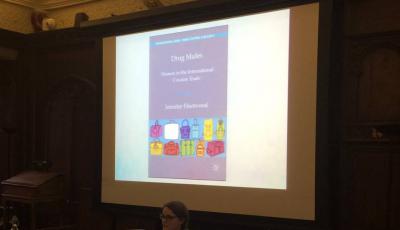When we think of the ‘international cocaine trade,’ many images come to mind: Suits. Black hats. ‘Gangsters.’ Nightclubs. Violence. Men. But whilst most of us appear to be aware of this globally organised network, not many of us know the lived experiences of those within, particularly those of women.

Through the lens of narrative criminology, Dr Fleetwood asks: how do women really get involved in the drug trade? How does gender―particularly femininity―fit within the realm of this male-dominated, international crime network?
Her research, gathered from the depths of an Ecuadorian prison, provides a unique snapshot of personal accounts from female drug mules from all over the world. Prisons here are at double capacity, with shortages of food, work, and health care, to say the least. Participating in a number of interviews, the women revealed how they became involved in the drug trade, what they thought of their actions, and what happened behind the scenes. Some spoke of their roles as mothers or wives, and expressed the desire to provide for their families. Others focused on idealised notions of love that drew them to the drug trade, in pursuit of future wifehood. Most of these accounts speak to ‘gendered narratives,’ drawing on existing identities related to love, maternal instinct, motherly or wifely roles, and money. Dr Fleetwood suggested that rather than being forced into it, these women in fact ‘talk themselves into offending.’

Challenging perceptions about the drug trade, Dr Fleetwood’s presentation reminds us of the importance of the ‘micro’ in criminology, reducing large-scale phenomena like the international drug trade to a personal level. Using a sociological approach to drug trafficking and ‘getting to know them as living, breathing people,’ this research gives female drug mules’ narratives a space in this heavily masculinised trade, enabling a more comprehensive understanding of the wider international cocaine network.
Keywords:
Share:
